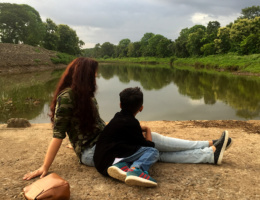
The idea of STEAM, the acronym stands for Science, Technology, Engineering, Art, and Math. It started as simply STEM, without the A for Art. STEM and STEAM-based learning have become a huge educational movement.
It increases hand and eye coordination. Hands-on motor skills get enhanced and also helps children learn through developing and analyzing data as per their age and understanding. It helps kickstart the process of becoming independent in your own tasks early on in children.
It is an inquiry-based learning in which children have to actually think and make or experiment and learn the concept by their own samples made. So, there is in-depth investigative learning of a concept where the child discovers the various aspects while doing the STEM/STEAM activities related to the topic concerned.
 It helps learn through real-life experiments and prepares the children for future vocational training and opens up avenues for forming a solid foundation to looking out and preparing for the real-world jobs. For example, the children are given toothpicks, clay, straws, popsicles and pipe cleaners and told to make a bridge that is long and short, they are not only engineering a bridge through these raw materials but this is also driving the concept of long and short home through live experimenting and building.
It helps learn through real-life experiments and prepares the children for future vocational training and opens up avenues for forming a solid foundation to looking out and preparing for the real-world jobs. For example, the children are given toothpicks, clay, straws, popsicles and pipe cleaners and told to make a bridge that is long and short, they are not only engineering a bridge through these raw materials but this is also driving the concept of long and short home through live experimenting and building.
STEM/STEAM is slowly catching up on to different curriculums rather than rote learning or restrictive textbook learning. The only slight speed breakers in this system of learning are that there is no concrete structured learning and the slow learner and special education need children may get left out and the lack of proper resources to help reinforce and build for the particular topic given to the child could be an impediment.
In STEM/STEAM the pros far outweigh the cons as we can lead the child by helping them build the bridge, 3 d shapes, etc. using the resources provided rather than just leaving it to the kids to discover from scratch this is for the benefit of the special needs and the slow learners. The activities can be customized according to each student’s ability so as to have a better structure and become child-friendly as per their caliber. Schools should provide all resources that help foster a great STEM/ STEAM learning through play environment
Have you tried teaching through STEM/ STEAM Activities at home or school? Do write and let me know how successful you were and what were the areas of improvement.
- Pooja Guha-Bansode
- October 22, 2018
- 0 Comment






